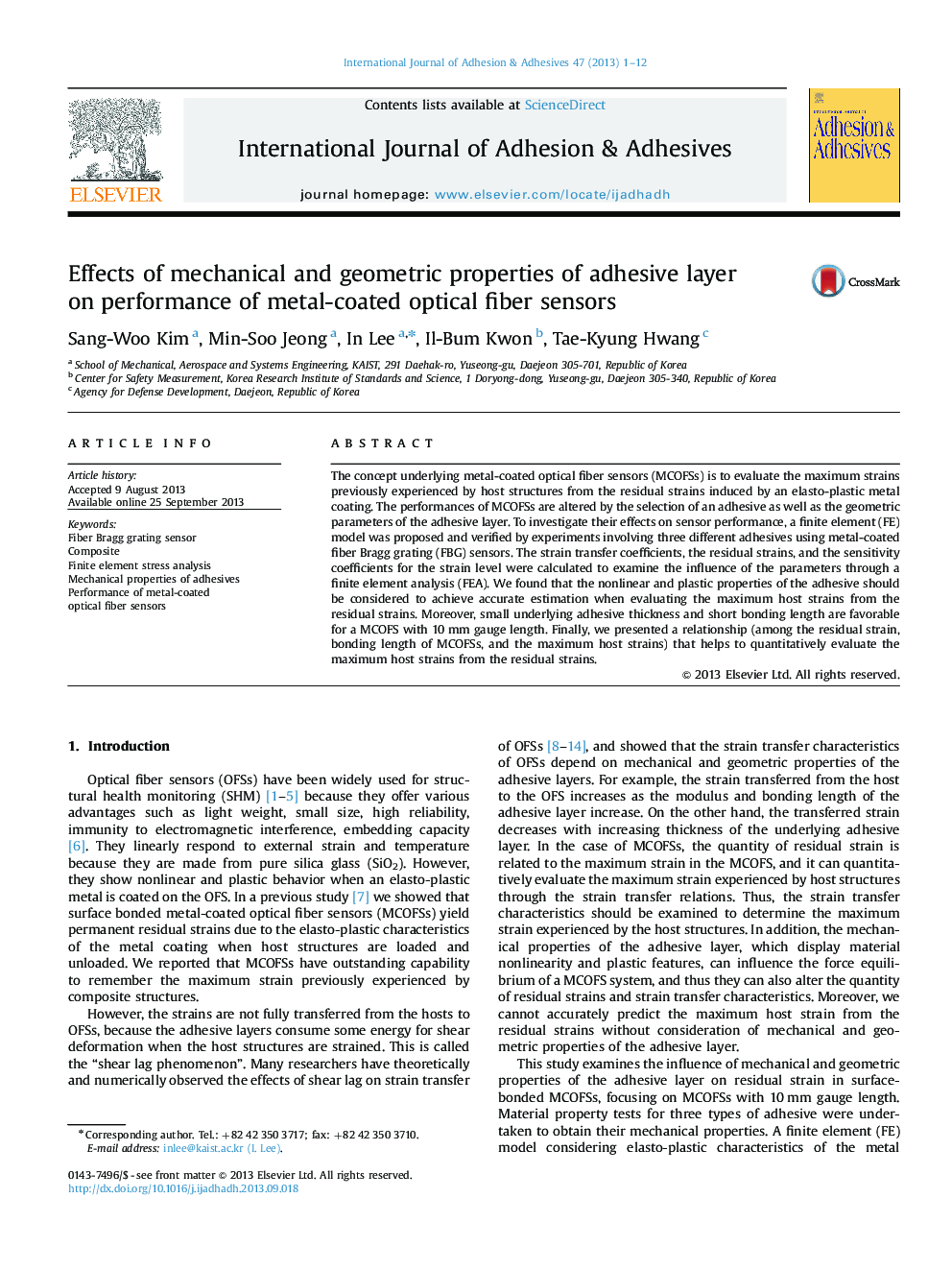| Article ID | Journal | Published Year | Pages | File Type |
|---|---|---|---|---|
| 776796 | International Journal of Adhesion and Adhesives | 2013 | 12 Pages |
The concept underlying metal-coated optical fiber sensors (MCOFSs) is to evaluate the maximum strains previously experienced by host structures from the residual strains induced by an elasto-plastic metal coating. The performances of MCOFSs are altered by the selection of an adhesive as well as the geometric parameters of the adhesive layer. To investigate their effects on sensor performance, a finite element (FE) model was proposed and verified by experiments involving three different adhesives using metal-coated fiber Bragg grating (FBG) sensors. The strain transfer coefficients, the residual strains, and the sensitivity coefficients for the strain level were calculated to examine the influence of the parameters through a finite element analysis (FEA). We found that the nonlinear and plastic properties of the adhesive should be considered to achieve accurate estimation when evaluating the maximum host strains from the residual strains. Moreover, small underlying adhesive thickness and short bonding length are favorable for a MCOFS with 10 mm gauge length. Finally, we presented a relationship (among the residual strain, bonding length of MCOFSs, and the maximum host strains) that helps to quantitatively evaluate the maximum host strains from the residual strains.
